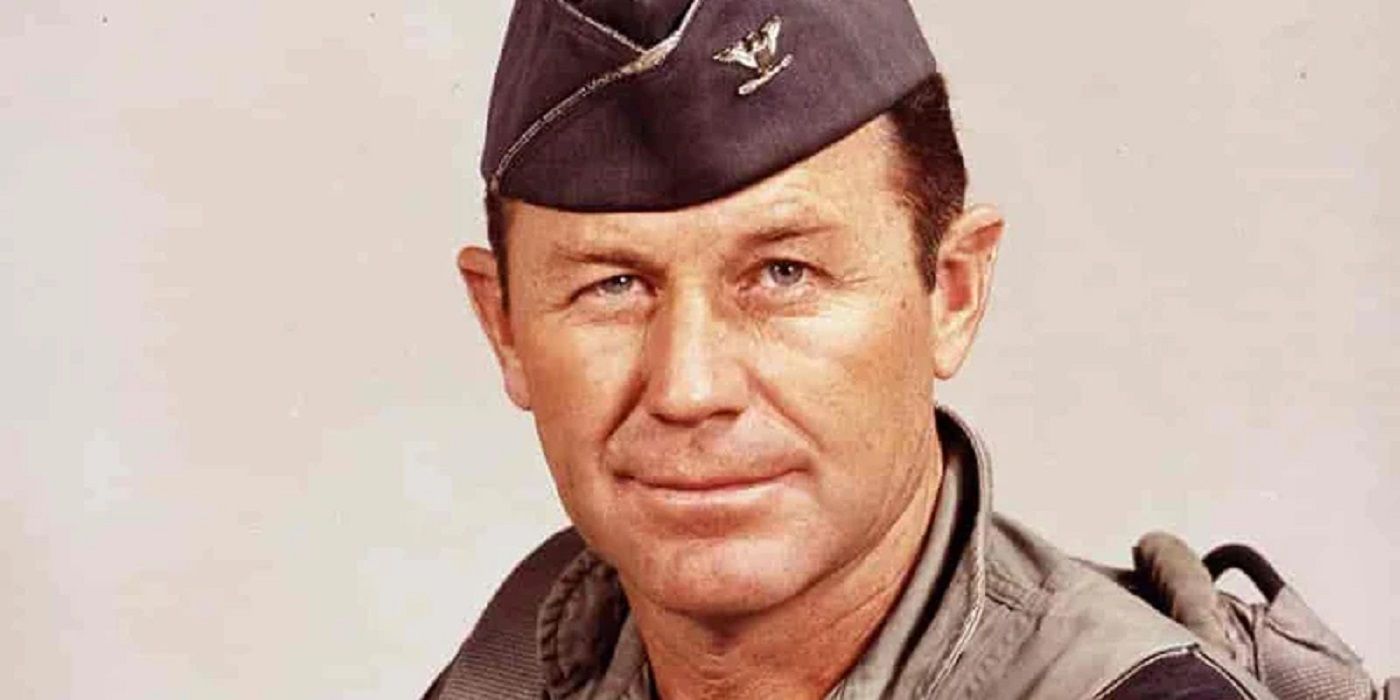Charles Elwood "Chuck" Yeager, a heroic test pilot for the United States Air Force who was the first pilot to ever fly faster than the speed of sound, passed away on Monday at the age of 97.
Besides setting a number of other records as a test pilot and having an undeniable influence on the other test pilots who made up the the original "Mercury Seven" group of astronauts for the National Aeronautics and Space Administration (NASA), as famously detailed in Tom Wolf'e best-selling work of new journalism, The Right Stuff, Yeager flew as a fighter pilot with distinction in three different wars before retiring from the military as an Air Force Brigadier General.
Yeager's military career actually began before the United States entered World War II. He enlisted in the United States Army Air Forces (the United States Air Force did not become a distinct entity until 1947) as a private in September of 1941. At the time, it did not appear as though flying would be in the cards for Yeager based on the strict age and education requirements of the time for pilots (Yeager was too young and he had only recently graduated high school). When the Axis powers declared war on the United States following the Japanese attack on Pearl Harbor in December 1941, however, there was such an increased demand for pilots that those requirements were relaxed and Yeager was soon entered into training as a pilot.
Yeager quickly showed off his tremendous flying skills in combat against the Germans in support of the British Royal Air Force, but he was shot down over France during his eighth mission. He eventually returned to England after being smuggled out of the country by the French Resistance. At the time, there was a policy that no pilot who returned from France would be allowed to fly again, for fear that the would put the Resistance in danger if they were shot down again (as they would have specific knowledge of the Resistance activities that they didn't have the first time). Yeager fought hard to be allowed back and eventually, Dwight D. Eisenhower approved Yeager's return to the skies. It was during his second stint that he reached "ace in day," which is what you call it when a pilot downs five enemy planes in a single day. Two of the planes Yeager took down were achieved with just his flying skills, as he came across a German plane in such a fashion that it shocked the German plane enough that it collided with one of its fellow German aircrafts, crashing both.
Yeager ended the war having taken down over eleven enemy aircraft, including one of the first takedowns of a jet airplane (Yeager got it as it was preparing for landing). Following the war, Yeager remained in the Air Force and, after graduating from Air Materiel Command Flight Performance School, Yeager became the most famous test pilot in the country. He is most famous for being the first pilot to break the sound barrier in 1947, but he set many other speed records (including traveling at more than twice the speed of sound in 1953).
He became such a famous pilot that a whole generation of fiction test pilots debuted in honor of him. Just in the world of comic books, there was Ace Morgan, Ben "The Thing" Grimm, Larry "Negative Man" Trainor and, of course, the most famous of them all, Hal Jordan, Green Lantern of Sector 2814.
Yeager flew combat missions in both the Korean and Vietnam wars. He also helped advise the Pakistani Air Force in the 1970s during a conflict with India.
In popular culture, Yeager is perhaps best remembered for his role in the development of the NASA program, where the initial "Mercury Seven" astronauts were chosen from other test pilots from Yeager's era. The problem was that the government decided that only Air Force pilots with college degrees would be chosen as astronauts, so Yeager, considered the greatest pilot of them all, was ineligible for the Mercury program. Still, Yeager had a good deal of influence on the early days of NASA.
Yeager retired from the military in 1975 and became a technical adviser and spokesperson in the decades since, while racking up so many lifetimes achievement awards that he could probably fill a whole warehouse with them. Yeager was survived by his second wife, Victoria Scott D'Angelo, who he was married to since 2003. His first wife, Glennis Dickhouse, passed away in 1990. They were married for 45 years. Yeager named both his plane during World War II and the jet that he broke the sound barrier in honor of Dickhouse (she was "just" his girlfriend during World War II). His World War II plane was called "Glamorous Glen" and his X-1 jet was called "Glamorous Glennis." Yeager is also survived by his four children with Dickhouse.

